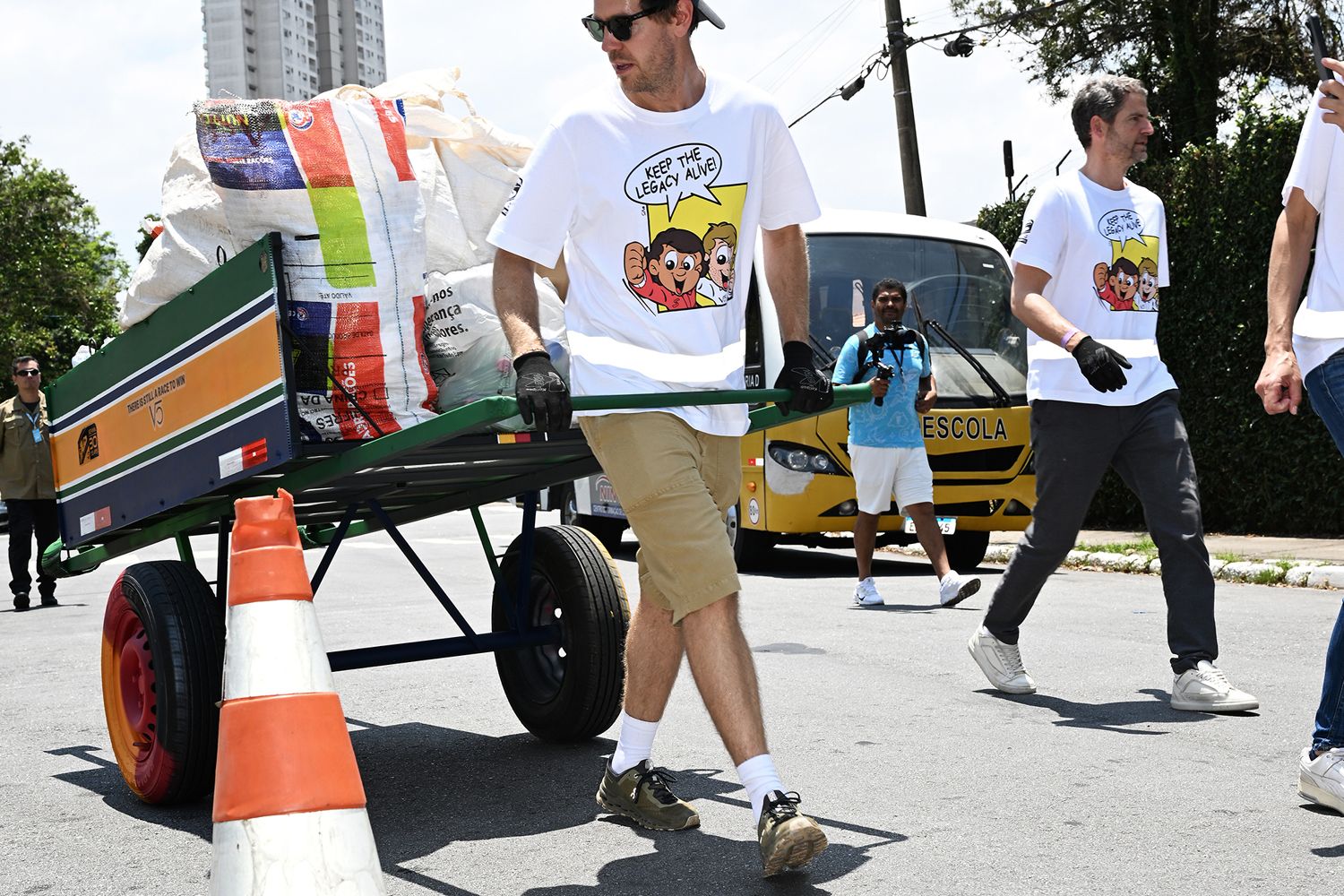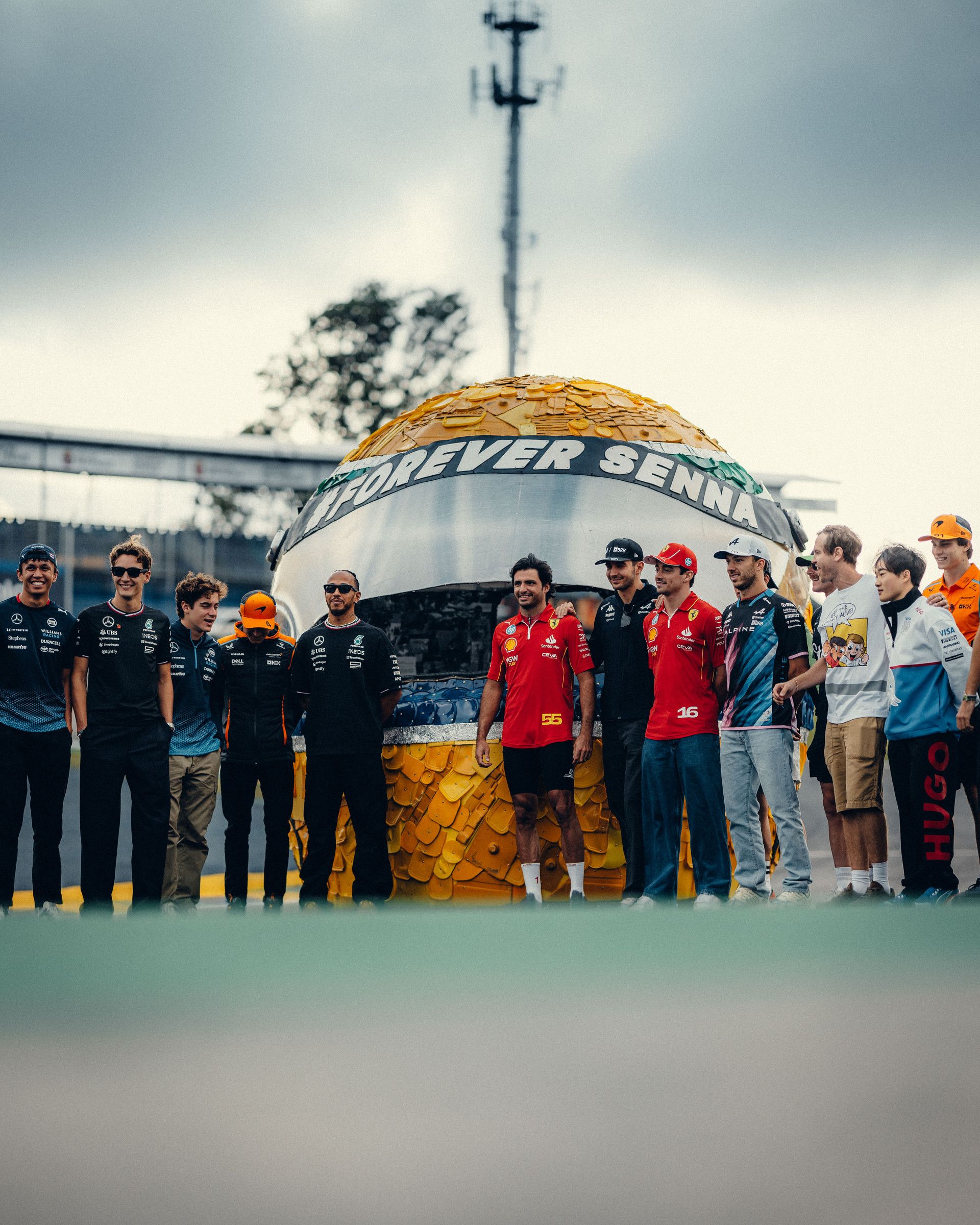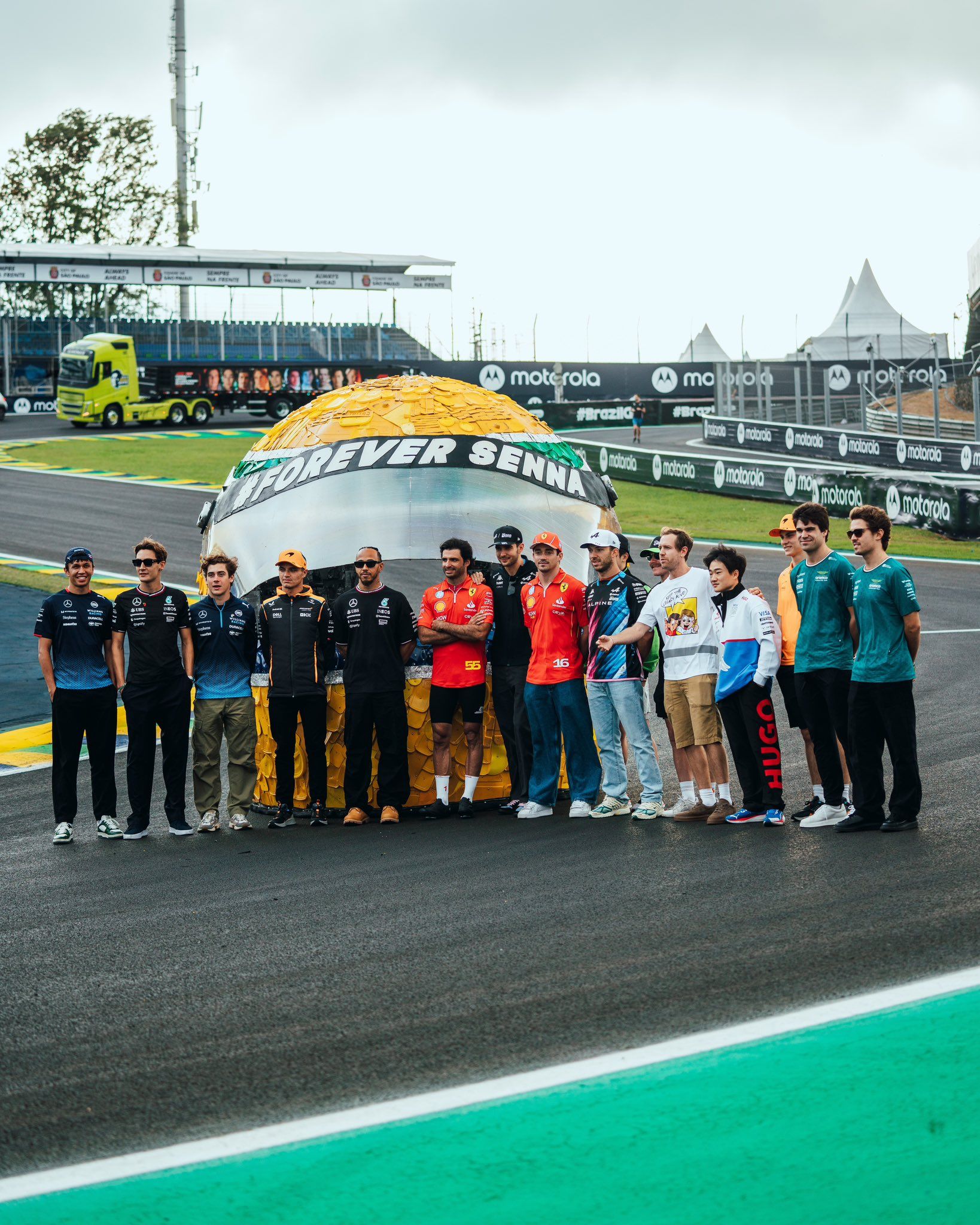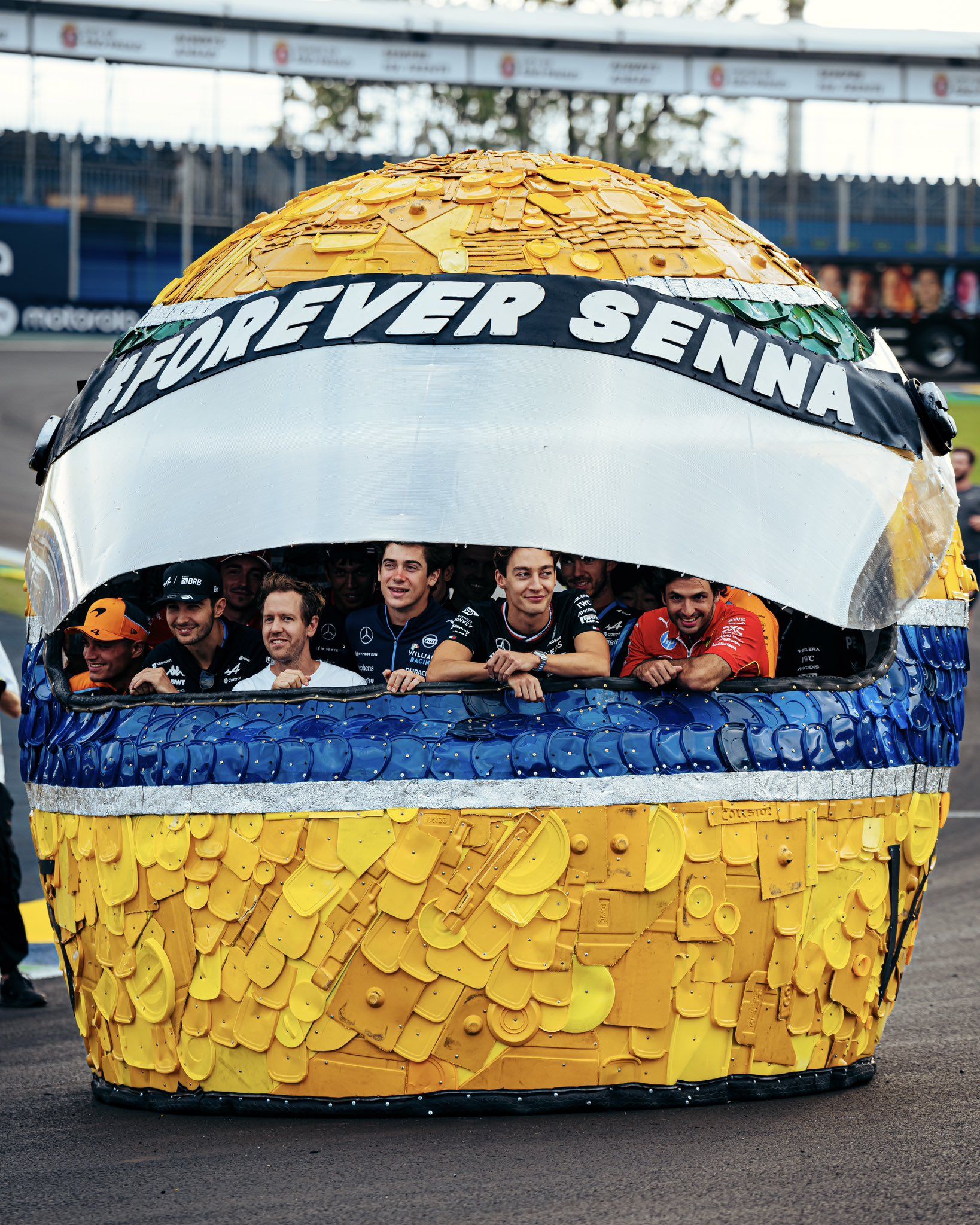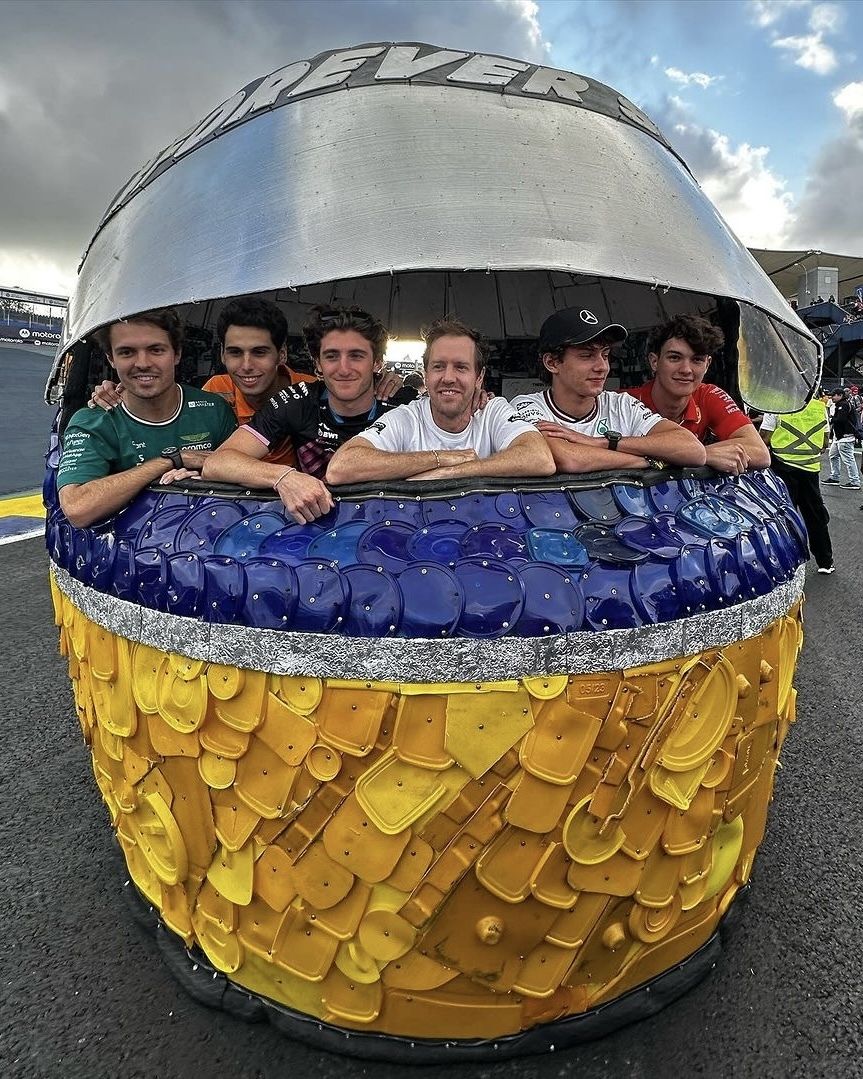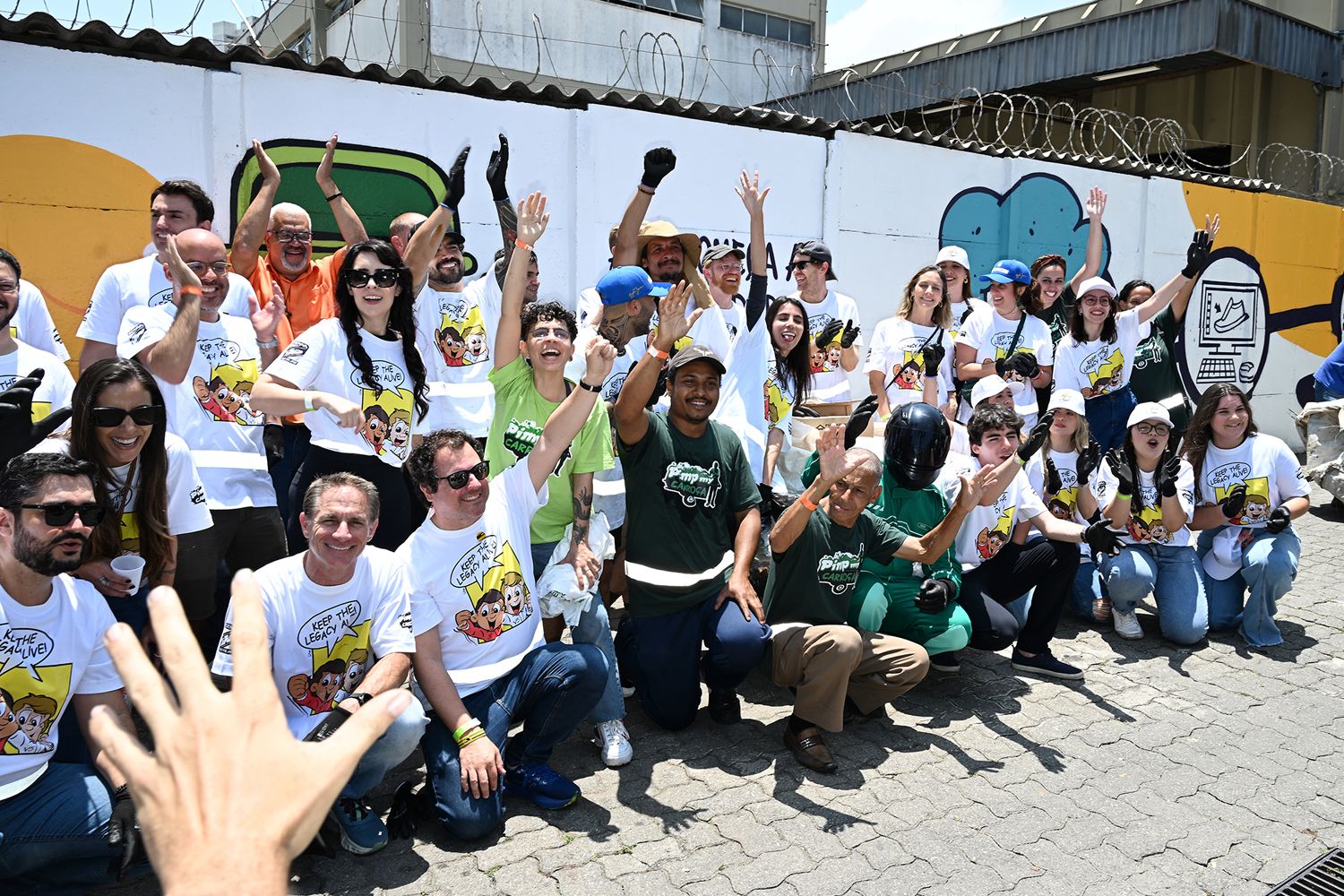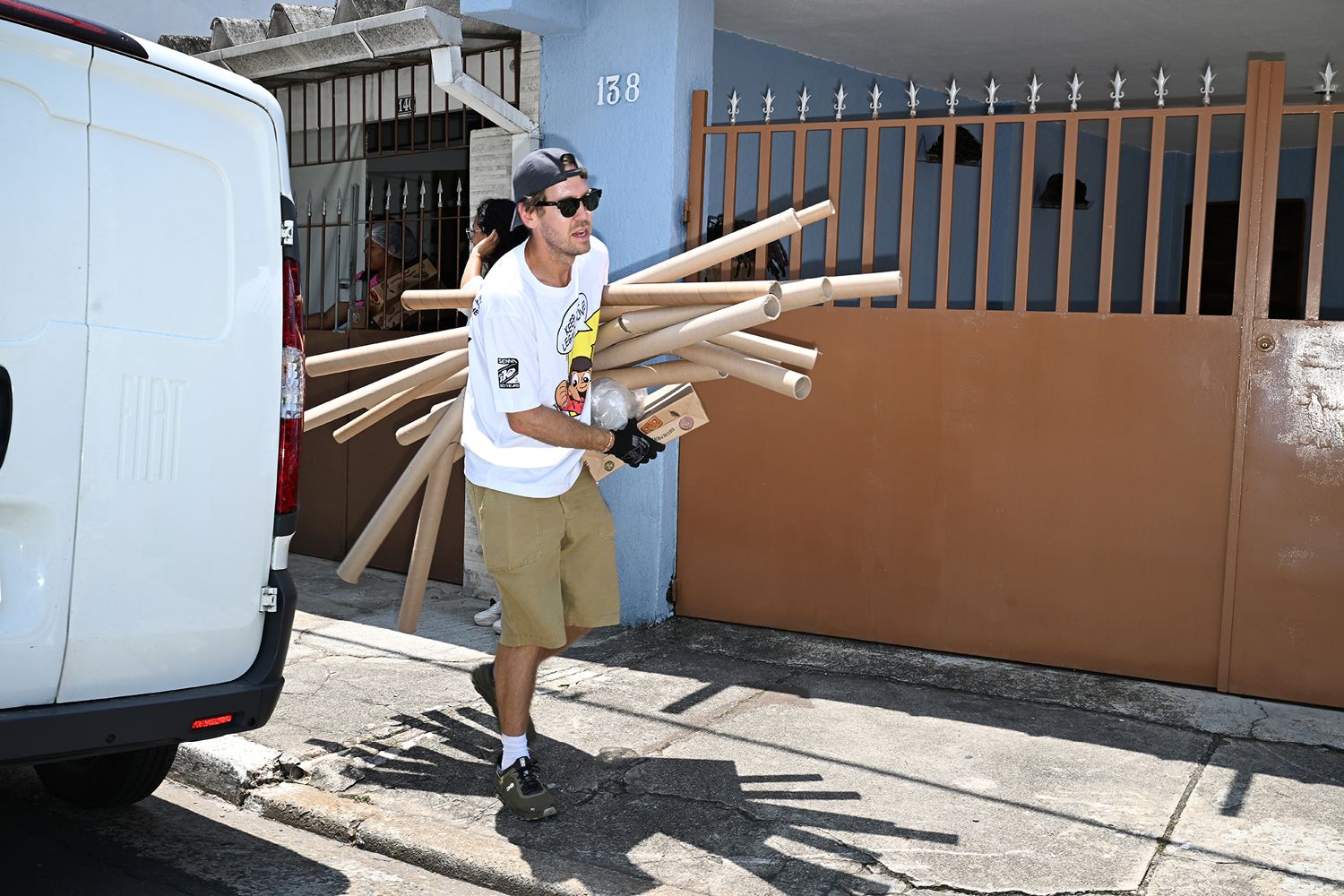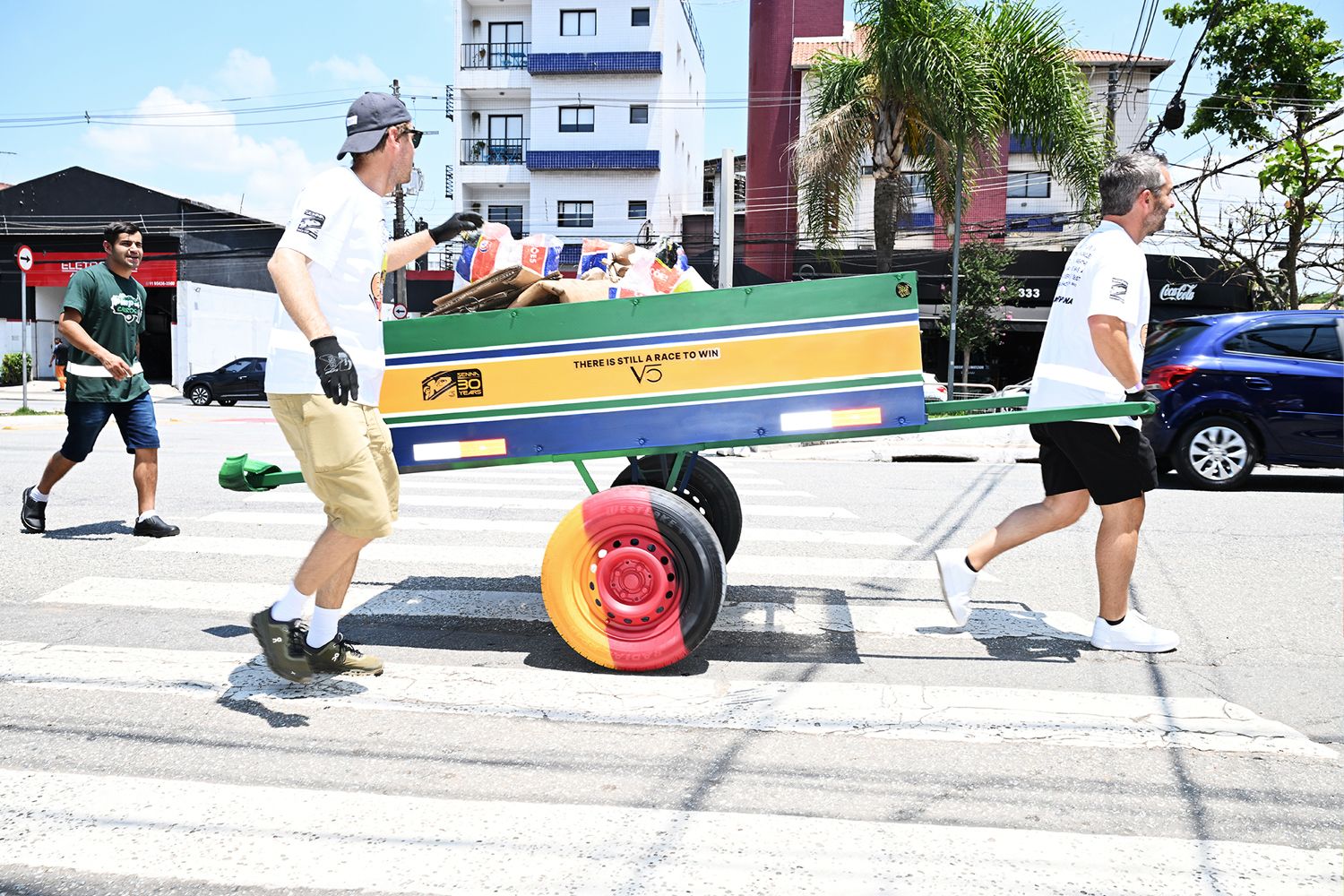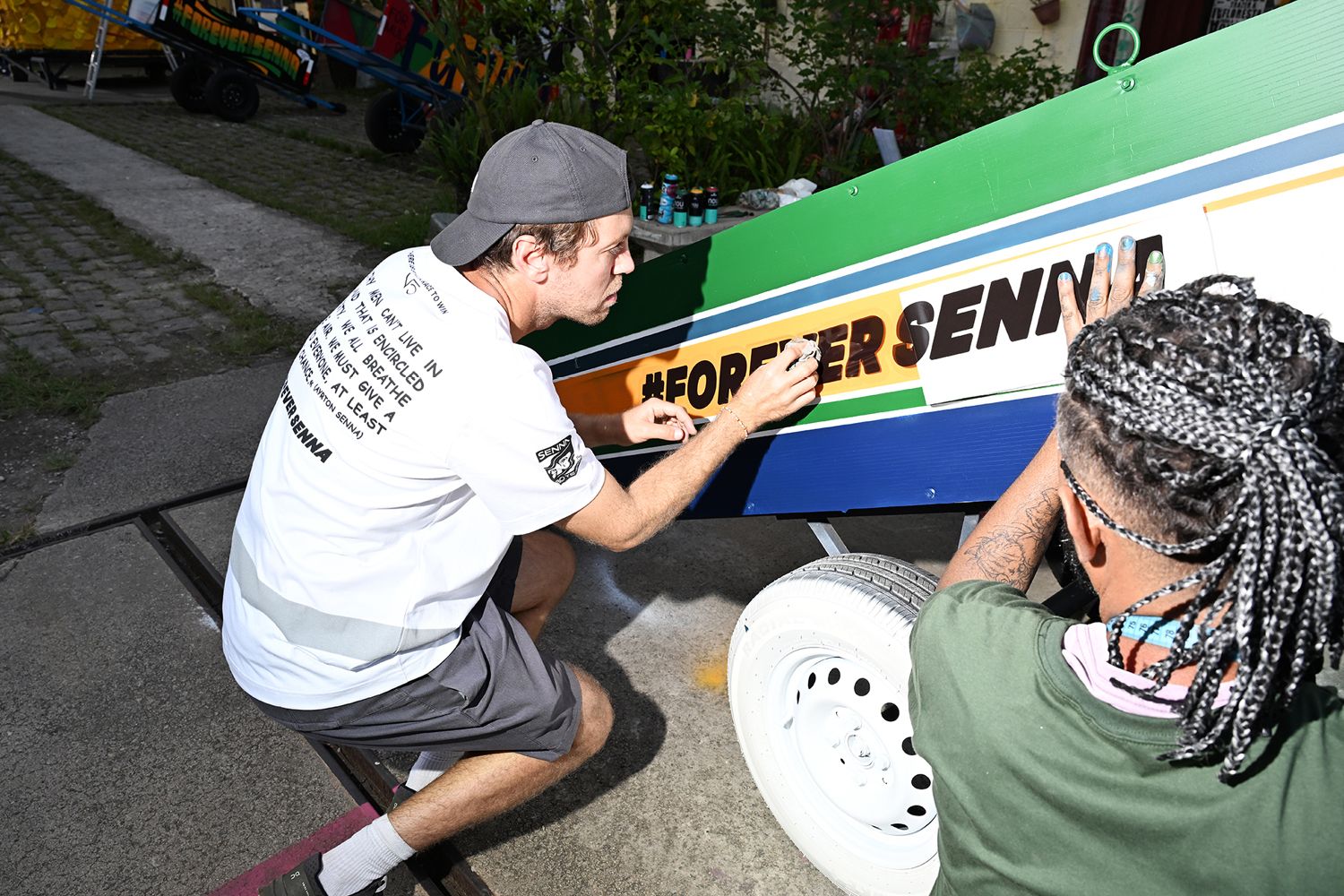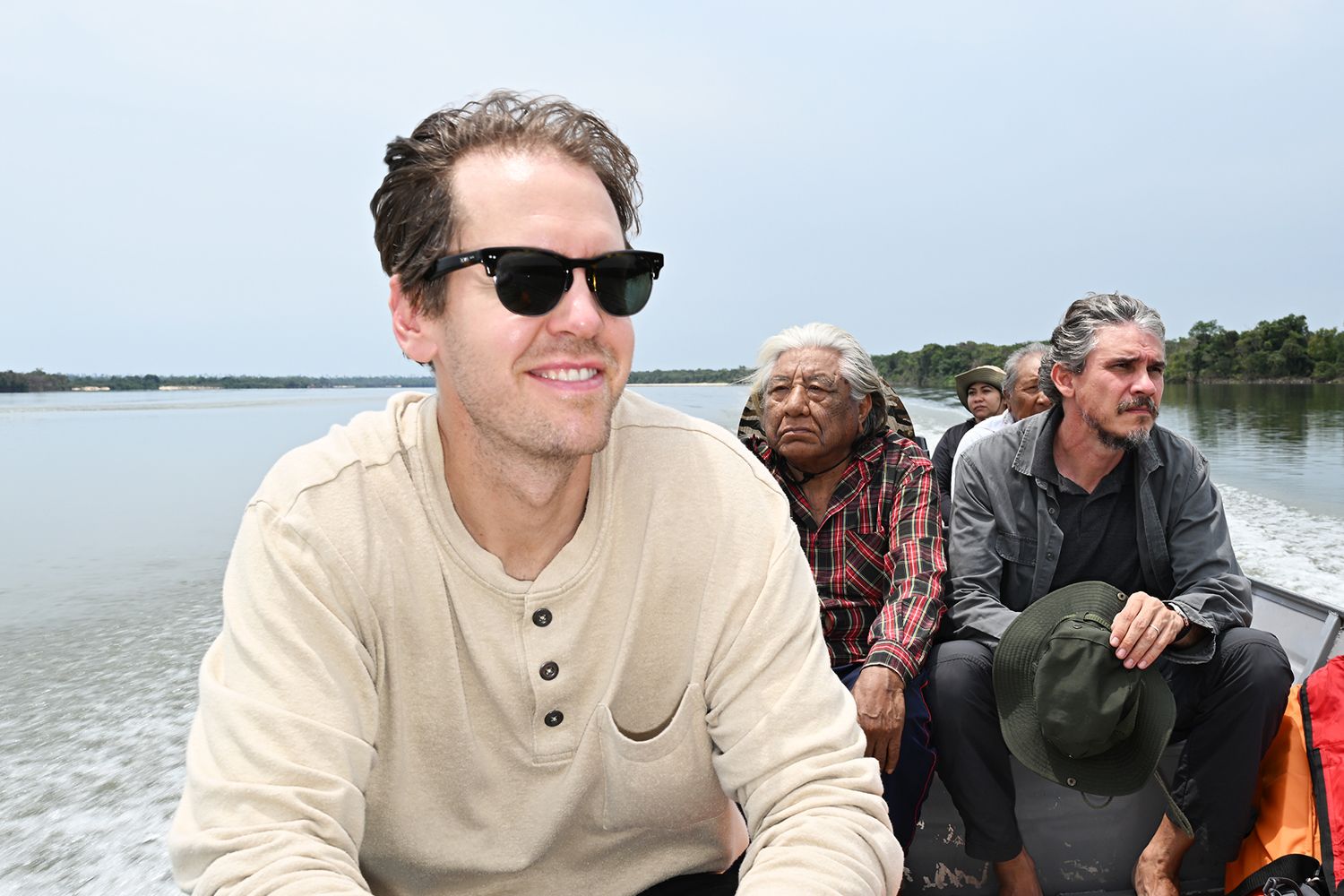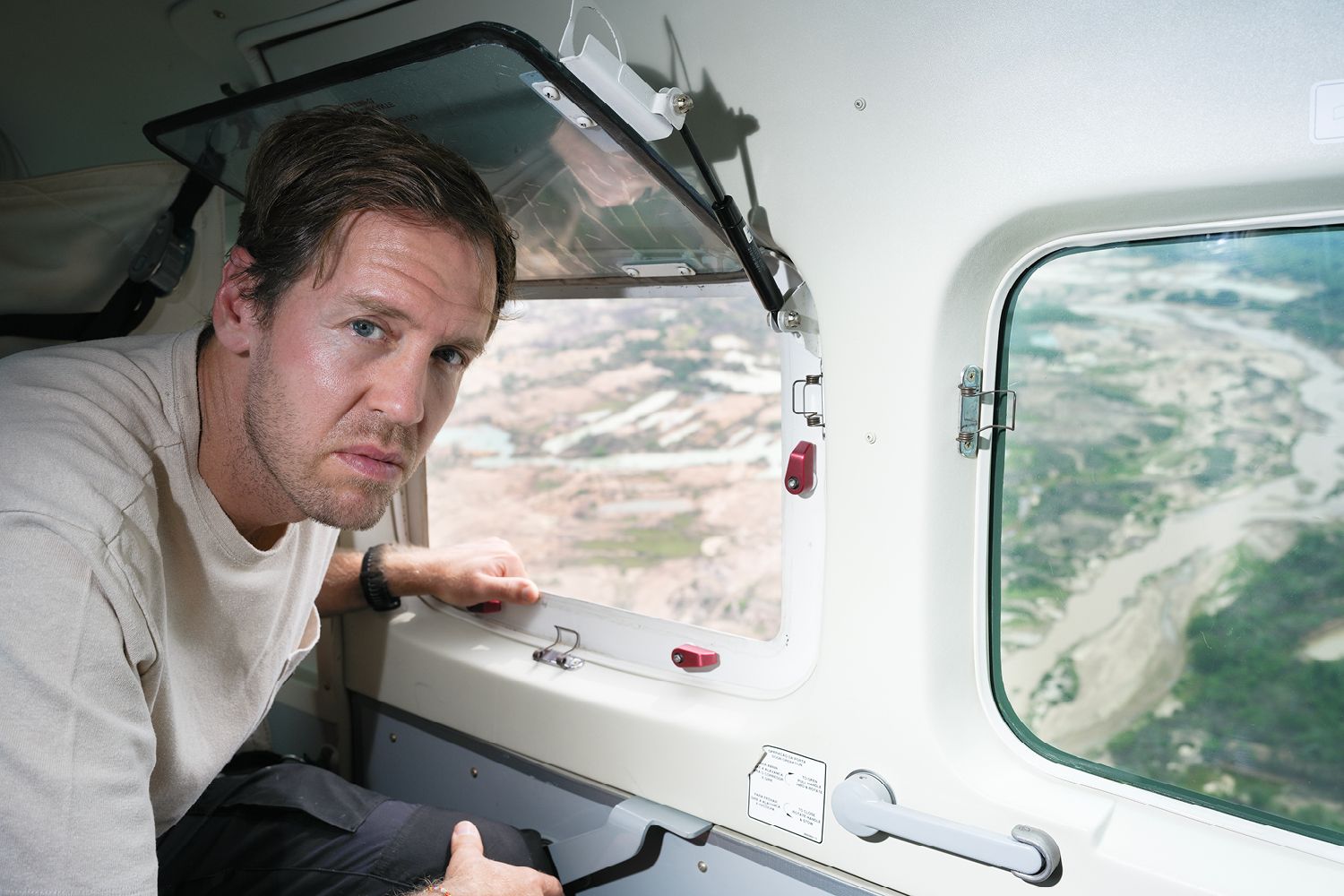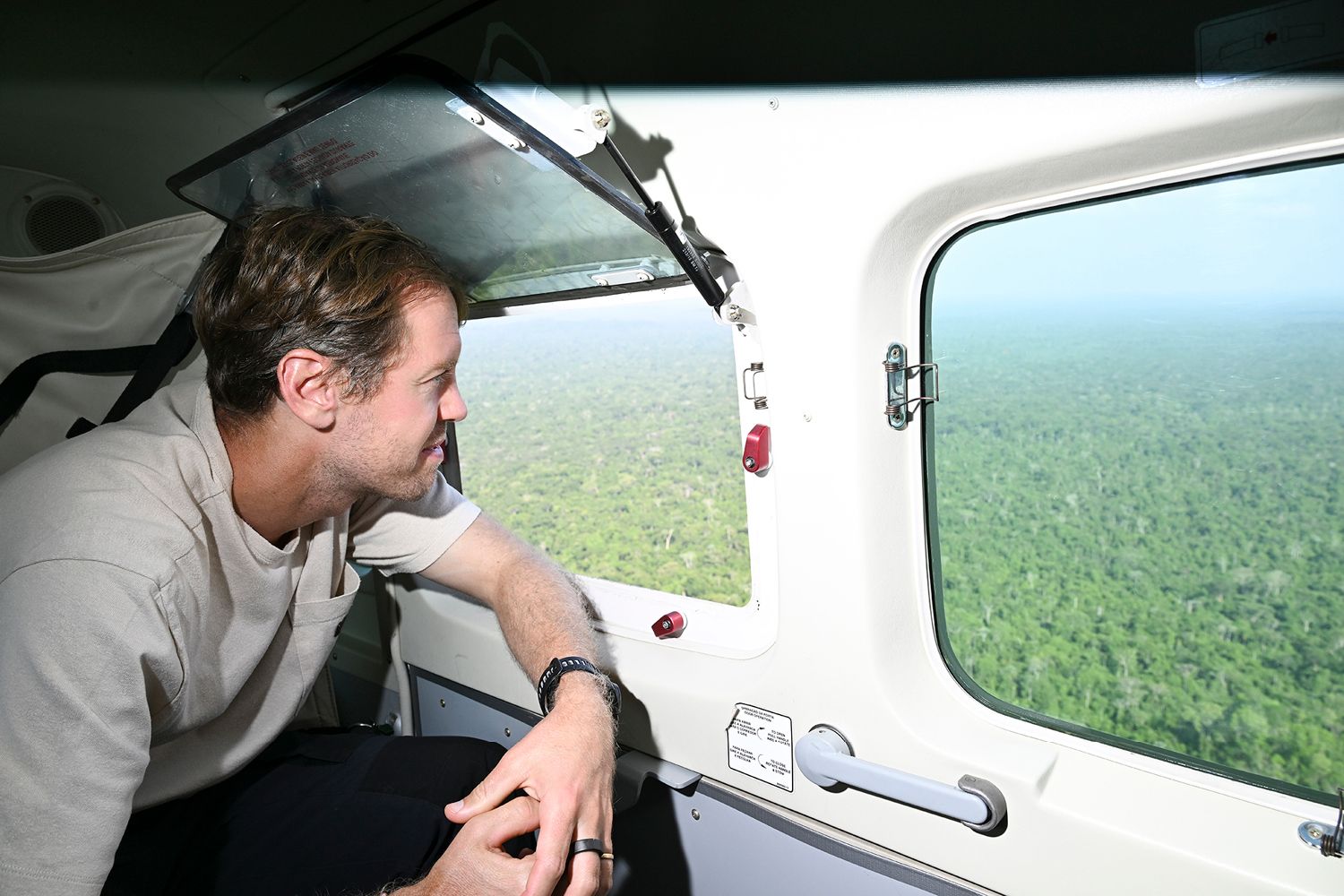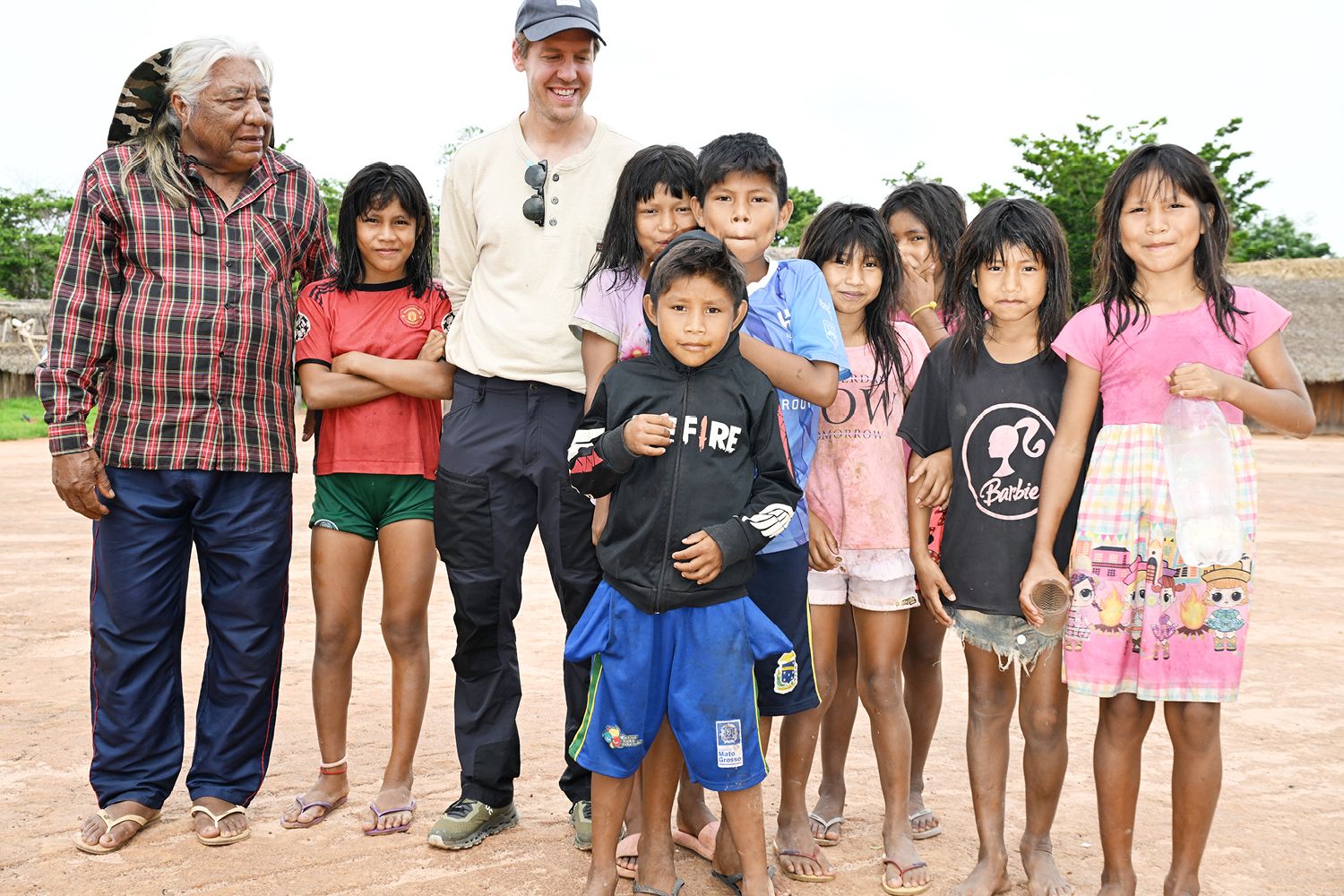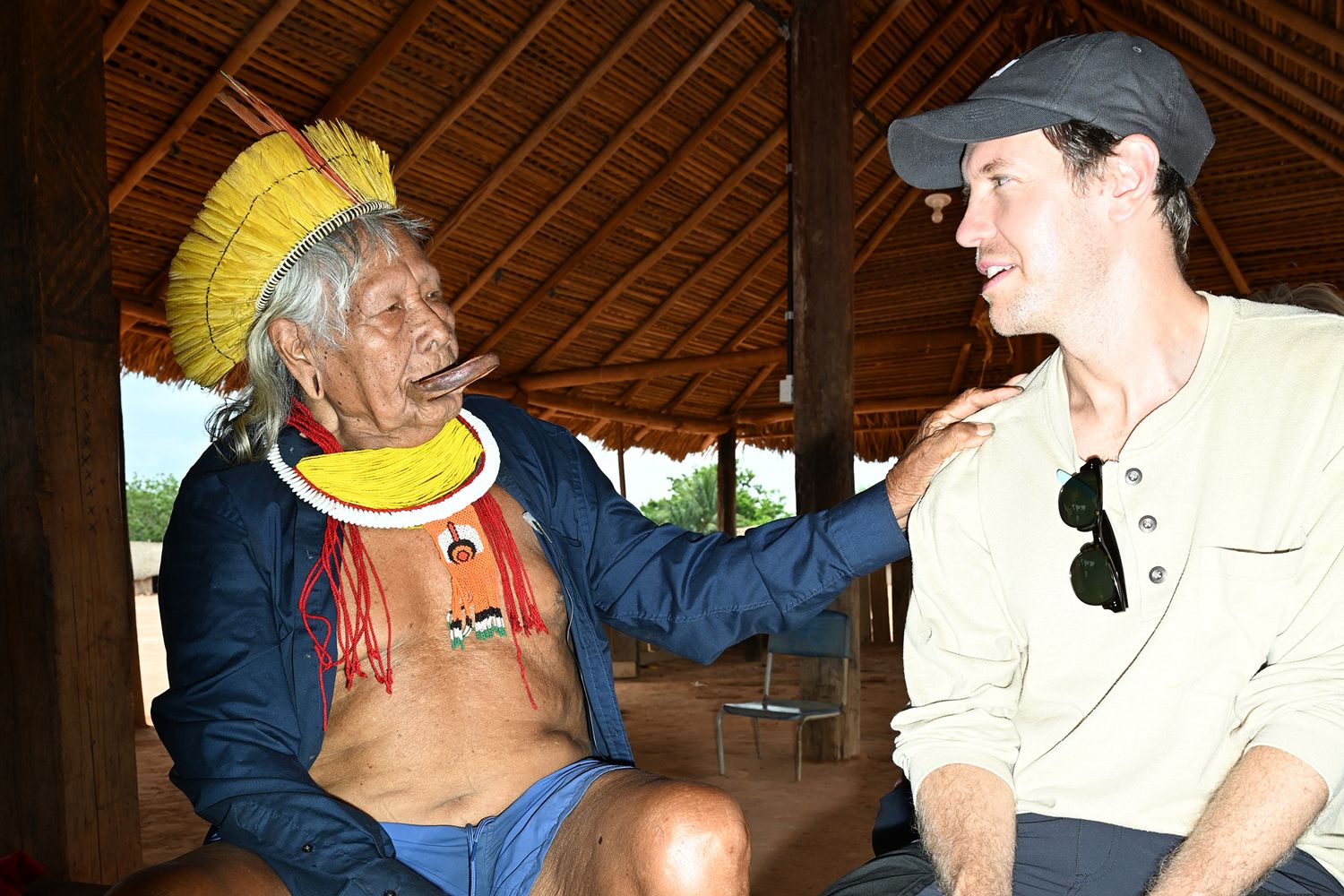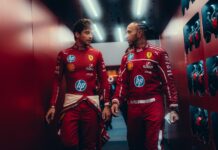Sebastian Vettel expands on the idea for waste picker and using Ayrton Senna’s name to undertake new initiative in Brazil, as he adds on visit to Amazon Rainforest.
Ahead of the F1 Brazil GP weekend, four-time champion released details of his special programme to continue on the legacy of Senna. The German had done a demo run in Emilia Romagna GP and thought of another initiative under the Brazilian’s name in his home country.
The waste picker plan was ideated and executed where Vettel and his team build a giant helmet – made of all the items they collected in and around Sao Paulo. It was ready on Thursday of the Brazil GP weekend and they used Senna’s helmet colours of yellow, green and blue.
He not only invited his fellow F1 drivers, but also the F2 racers along with race officials and media. He even gave a tour of inside the helmet. Vettel explained why he chose the waste picker initiative, considering how waste is a big issue in Brazil and also around the globe.
He wanted to use Senna’s legacy of the work he did outside the circuit to inspire new-age fans and also racers to speak about these things. Prior to his helmet work, he also visited the Amazon Rainforest to meet the locals and see how they are pushing ahead in safeguarding their homes and environment.
More about the idea, how it came about –
Vettel: “Well, it’s an event, but I think it’s also a sculpture or a piece of art, so it’s been a lot of work and obviously continuing to tell the story from Imola, 30 years after Ayrton’s fatal accident, really to celebrate his legacy, that’s the idea. Somebody that was obviously very popular for what he did on track, but also had a lot of courage to speak up outside the track and speak up for important things, trying to push the boundaries in his home country, improving the situation for kids when it comes to education, fighting poverty. So yeah, I think I took a lot of inspiration from that and we thought of what we can do to try and create a symbol so that the legacy lives on. And obviously, I’ve been quite aware of the situation in the world when you look at the environment, but social topics and the environmental topics are very closely linked to each other.
“So we came up with the idea to make this helmet, as it is a strong symbol of recognition for a driver, it’s what you see from the grandstands as a fan and how you recognize a driver. Ayrton had the yellow helmet with the Brazilian colors and we wanted to build that, but do it a little bit differently. We made it 100% from trash that was collected in Sao Paulo and built this helmet. So hopefully it finds a home after this event as well, but obviously we launched it here, it got ready just in time, we finished it in the morning we launched, we collected a little bit more waste as well outside the track. So that’s in short a little bit the story and what we’re trying to do is really to celebrate him and celebrate his legacy and try and build something so that people can understand who he was and who he stood up for. we came up with the idea sort of together. Obviously, you know, very small team and lots of ideas floating around. But after Imola, I think we had such a powerful reception, really wanted to do something in Brazil, in Ayrton’s home country as well.
“And we were thinking about a symbol to create something that lasts and is not only temporary. Like, doing these laps on the circuit was very emotional and great, but it was sort of temporary. So now we’re thinking of doing something that can last and outlive, let’s say, a couple of laps on track. And obviously the driver’s helmet is a strong point of recognition. It’s how you spot the driver when you’re watching on the grandstand. And it’s sort of the most personal thing we have to identify ourselves. Ayrton had this striking design and it means so much and so powerful as a message, that’s where the helmet idea came along. But to do it a bit differently so that you can, you know, have Senna’s inside, because you’re inside the helmet and, you know, we have pictures on the wall. There’s an audio installation as well. So I’m talking over the speaker, talking about Ayrton and his legacy and to make it accessible for young and old to see and come and visit during the Grand Prix and then hopefully in a museum one day.”
Message you sending, Senna’s legacy –
Vettel: “Well in all this, I think what I’m trying to tell and inspire is that there’s more to a driver. I think there’s more than just the actions on track and if you want to look as short term as possible, you probably look at the last race and the next race, but if you zoom out and you look at the bigger pictures, obviously there’s some drivers that are very new on the grid, but others that have been around for a while and I think it’s important you have such a huge platform and so much power in a way to inspire people, not just when it comes to how much you are performing and what you’re doing to perform better, but also to speak up for things that are important to you and they can be anything really. I think that’s to find the courage in that, it takes some time and yeah, really I think that’s a great symbol of a person, Ayrton, that had this courage, found this courage in his active time when he was racing and tried to take care of things outside the track. I think it’s important and when I looked into it, and obviously as a fellow driver that I never met, I think I stood for so many things on the circuit that in a way I’m able to judge because of what it means, the performance in the car, what is achieved.
“But then really looking outside of that, and I think Ayrton is very much still alive, especially in Brazil, not only because of what he achieved on track, of course that is a very strong pull, but the character he had, the charisma, the aura, the topics that he addressed, the way he spoke, the way he spoke his mind. Sometimes he might have been wrong, but the courage he had to say what he thinks,I think that really stood out and inspired so many people. And even in the street, you play the song, you speak about Ayrton, they know it immediately and they sort of travel back in time to his time. They tell their kids about it, even young kids today that were born way after he was active or way after he died, they still know who he is, who he was, what he stood for. So I think that’s the great thing, if you open up and let people see a little bit more of who you are, rather than just the telling you do on the track, which obviously is entertaining and great for people to watch and to take inspiration, but there’s so much more to these 20 drivers now on the grid, and I would encourage them to speak up and find whatever matters to them as well.”
Global problem, privilege –
Vettel: “I think, waste is a global problem and the way we look at waste as well, it is something that needs to change. Obviously in Brazil only very little of the waste that ends up on the streets is getting recycled, but I think you need to start even before that and that’s why we try to emphasize the waste pickers, the people and the men and women behind that are out on the streets every day, not just when the sun is shining and when the weather is fine and in the flat, but also up and down with their cars and trying to clean the streets to make a living, not necessarily to clean the streets, but to first make a living. And we did our little mini challenge and I think we finished in second place and we collected worth 12 euros of waste. So you can imagine how a day looks like if you have the pressure to deliver day in day out. But really I think it’s trying to start people thinking about what’s happening, maybe when they go shopping, whether they really need to buy something or not, whether they can buy maybe a packaging that is recyclable other than ending up in general waste, often dumps or landfill in the worst case or in our waters like the ocean. And also I think what we can do to unthink waste and see it as a resource and that’s been the idea with this project.
“It’s all waste in a way, but obviously you can see you can still build or make something out of it. And if we try and implement that and think more circular, have a more circular approach, then I think we’ll have a different approach when it comes to designing packages, products and so on, because then their ultimate goal is not just to be consumed, but then to end up being a resource again. My only other question to you would be, I mean this is very striking, you’re wearing the Senna helmet on the Senna races right now. I think it’s a huge privilege. I was born in Germany, that is a very rich country. I, in a way, could choose what I wanted to do or wanted to become. So I think that’s a huge privilege that millions or billions of people around the world do not have from the start. So they don’t have that opportunity to start with. And I think having the privilege to see the world, travel the world, meeting different people, different cultures, get an insight of what’s going on and then opening your eyes and looking at the problems, I think it’s important to talk about them. I don’t think it’s the right approach to point fingers and say you should do this or you should do that, but I think it is important that we speak to each other and we listen to each other and we listen to the problems that people have, the way they suffer and the opportunities that they might lack and then think of solutions.
“And often solutions are already in place because somebody else has been thinking about it. And that’s the inspiring and that’s the thing that makes me very optimistic. For sure, the climate crisis is serious. There’s a lot of social problems as well on this planet. But there are so many people that dedicate their time and there are so many solutions that are already in place and are already working and showing that we can reverse and we’ve reached the peak and we’re on the way down. We’ve just got to do it a little bit faster. I think that’s what I’m trying to emphasize and make people aware because once you become aware, you start to ask questions and then usually it goes its path. So whoever is listening or watching today, getting inspired by the drivers coming around, might start to do a bit of digging and asking questions themselves. And one day it might be on a desk of a man or a woman in charge and actually able to make a difference. So that’s, you know, in small to grand scale what I’m trying to do.”
Amazon Rainforest visit –
Vettel: “Yeah, it was obviously a different project, a different couple of days, but very inspiring to meet the people there, the indigenous people, the communities, change views and opinions and learn from them in particular. Obviously we know how, there’s always talk about how important the Amazon is for the world. It is their home, so it’s very important for them, but it’s true that it’s also very important to us because it’s obviously very rich when it comes to biodiversity, the ecosystem of the rainforest, but also it’s a huge carbon storage and if we are going to lose that, then it’s obviously a loss of home for these people that have been living there for thousands of years, but it’s also causing us quite some trouble. So that’s why we’ve got to protect it and yeah, it was very interesting to meet the leaders and speak to them how they are, managing and trying to fight, obviously the land grabbing from the outside that is taking place and protecting their forest.”
Here’s host of videos and posts from Sebastian Vettel: https://www.instagram.com/sebastianvettel/?hl=en
Here’s Lewis Hamilton driving Ayrton Senna’s McLaren
Here’s Sebastian Vettel driving Ayrton Senna’s car in Imola
Here’s link to a F1 Discord channel, join in to interact

